Lumière
audiovisual laser performance series [since 2013]
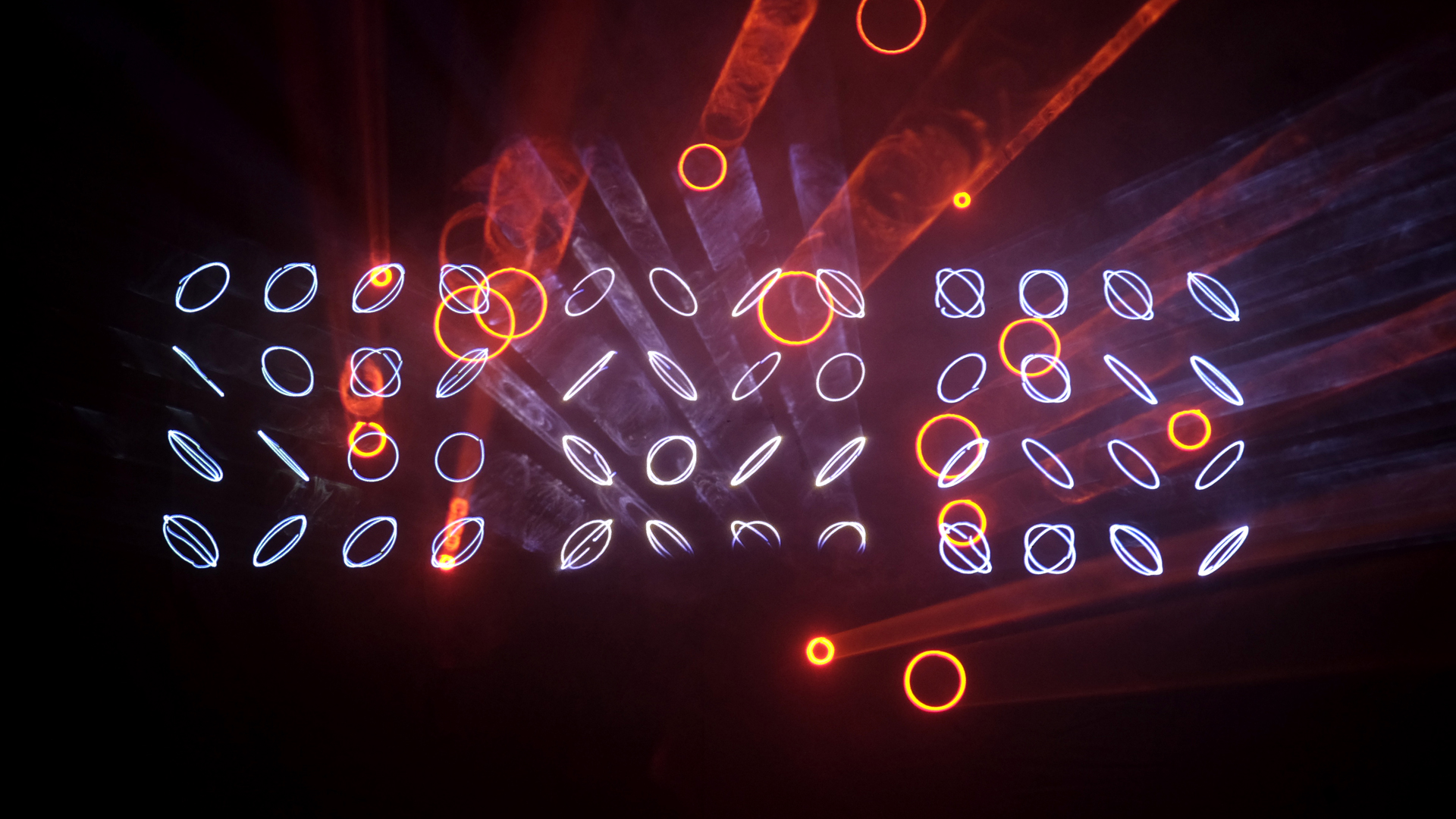
Lumière is 'audiovisual music', combining abstract laser graphics and sound into a unified immersive experience. It is based on a vector graphics software and dedicated sound synthesis engine, which the artist has been developing for this project. The software allows to generate rapid successions of visual shapes and associated sonic events, and to manipulate them in real time. Since the premiere in 2013, Lumière got three fundamental revisions, and countless 'minor updates'.
Audiovisual Events
The concept of 'audiovisual events', where each note represents both an auditive component and synchronised visual counterpart allows to approach composition in a different way: Instead of working on music first and then adding visual elements, or developing a visual narrative and afterwards compose a score for it, the process of creation down to atomic events is guided by a new paradigm of audiovisual rhythm and motion.
The origin of this concept was derived from common practice; the control signals for the lasers can be made audible or even be produced by audio synthesis techniques. Numerous artists have been exploring this concept, using lasers or (operating on the same principle) oscilloscopes. Lumière I did follow the same approach. It used the laser signals also for sound.
For some shapes, audible and visible results are related in a satisfying way, but for others the connection does not make much sense: A circle requires two sine waves to be drawn, and a square is defined by a few 'linear' segments of oscillation. However, drawing two circles cannot be done by simply adding two more sine waves, it requires a complex procedure of drawing on circle after another, and moving the mirrors in darkness in between, resulting in a sonic pattern that hardly matches the visual appearance.
A way out of it is to completely decouple drawing and sound, composing both a visual score and a musical one. It would allow maximum freedom of expression but has major drawbacks: Maintaining consistency requires to apply any structural change in the composition to both sides, and it also makes it easy to become arbitrary.
For Lumière II and III a more formalised answer has been found:
Each visual shape is bound to a MIDI note event. This is done with a text based shape editor. And a dedicated FM synthesis engine allows to recall a unique sound for the same note. Global 'articulations', such as LFOs, envelopes, automations, are applied simultaneously to visual shape generation and sound synthesis.
The result is a series of 'audiovisual notes' with a meaningful and consistent behaviour. This allows to compose and perform with note events that become almost tangible in their synchronicity of light and sound. It also opens the door to real time interaction with the score without loosing the audiovisual coherence.
Projected Laser Graphics
High contrast between total darkness and intense brightness creates 'negative objects' darker than black, the phenomenon of 'persistence of vision' contributes controlled afterimages and a sense of spatiality, which transcends from the projection surface. Synchronised sequences of overlapping moving shapes emitted from multiple lasers in the back of the auditorium are forming a audiovisual experience that oscillates between intimate and overwhelming.
Drawing with lasers requires the precise and fast movement of small mirrors. This imposes severe limits on the achievable complexity.
Lumière embraces these properties with its minimalist approach. Its visual richness is the result of the combination and succession of relatively simple shapes, and by deliberately incorporating the artefacts of the technology. The visual language of Lumière consists of transformations and combinations of primary symbols: circles, squares, lines, dots, glyphs, at times fragile and quiet, at others massive and overwhelming.
The result is an imaginary audiovisual language of an alien culture, communicating via emerging and disappearing traces of light and sound, futuristic and archaic at the same time.
Each Lumière event is a unique and site specific adaption of the work, performed by the artist sitting the back of the room, experiencing and shaping the work from an audience perspective.
Lumière has been presented more than 70 times in Europe, Asia, Africa, Australia, North- and South America. The project has been staged in 16th-century roman theatres, in amazing concert halls, in vast industrial spaces, in the yard of a castle and projected on a giant marble wall in a quarry.
Lumière I [2013]
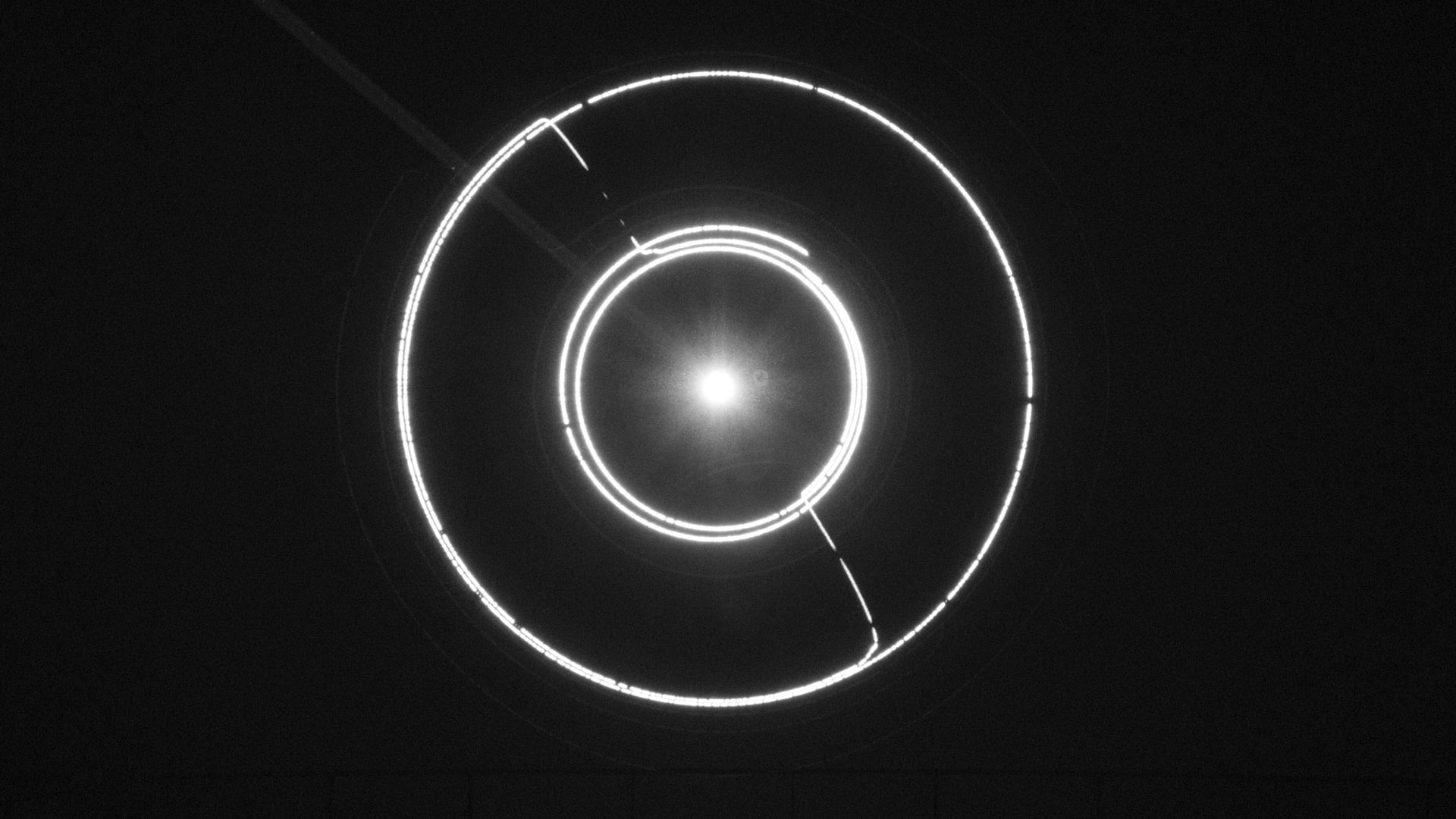
Lumière I was the artist's first laser based performance piece, inspired by the experience gained from his first laser installation, 'Fragile Territories' [2011].
The first version of Lumière was using three white light lasers, driven by a relatively limited graphics software, with a sound layer derived directly from the laser control signals. Additional percussive and textural sounds were used to add musical counterpoint and background. Lumière I was based on a performance model of improvisational electronic club music, extended to the audio visual domain. The result was raw and powerful, yet of very varying quality and ultimately the concept turned out to be too hard to master in a concert situation.
Premiere: October 18 2013 Unsound Festival Krakow, Poland
Lumière II [2015]
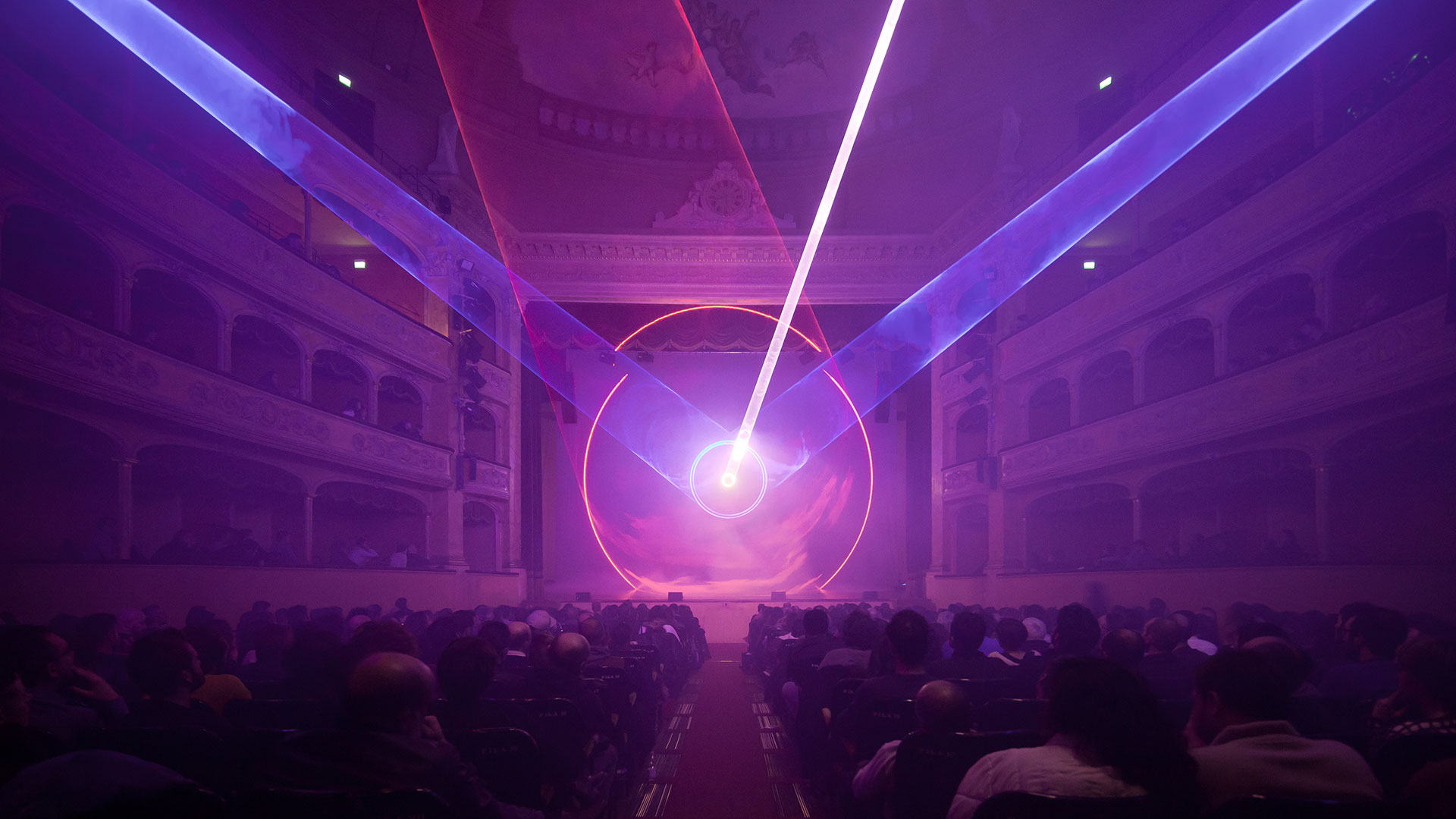
In an attempt to overcome the perceived flaws of the first iteration with its focus on improvisation and its relatively low visual complexity, Lumière II got created in 2014, based on a far more powerful software version and a new artistic concept. Lumière II was using four lasers, two of them custom made to provide a distinct color space using red, yellow and blue laser diodes, thus moving away from the strict monochromatic white of the first version.
The score of Lumière II was precomposed, with possible interactions and modifications during the concert. Sound generation was not based on the laser control signals anymore, but by a newly developed sound engine running in parallel with the lasers.
Premiere: February 19 2015 Centre George Pompidou Paris, France
Lumière III [2017]
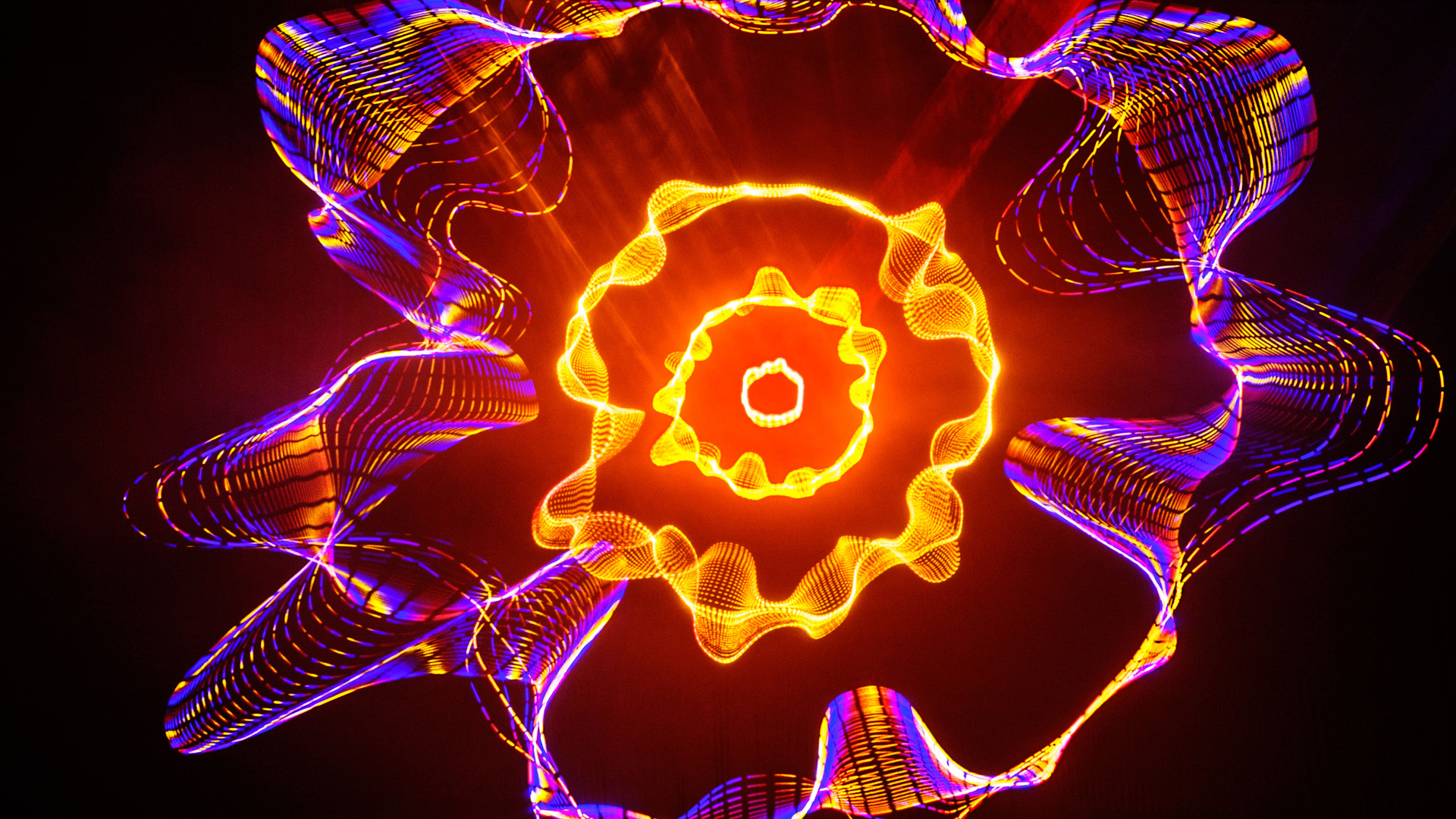
The intention of Lumière III was to take the best elements of Lumière II and Lumière I and whilst extend them towards more intricate complexity also regain the initial rawness - which got lost a bit in the refinement process of Lumière II. This made adaptions and improvements of the laser control software and the laser hardware necessary. A strong focus of version III was the refinement of the composition and its performance parameters.
Premiere:
February 16 2017
Barbican Concert Hall
London, UK
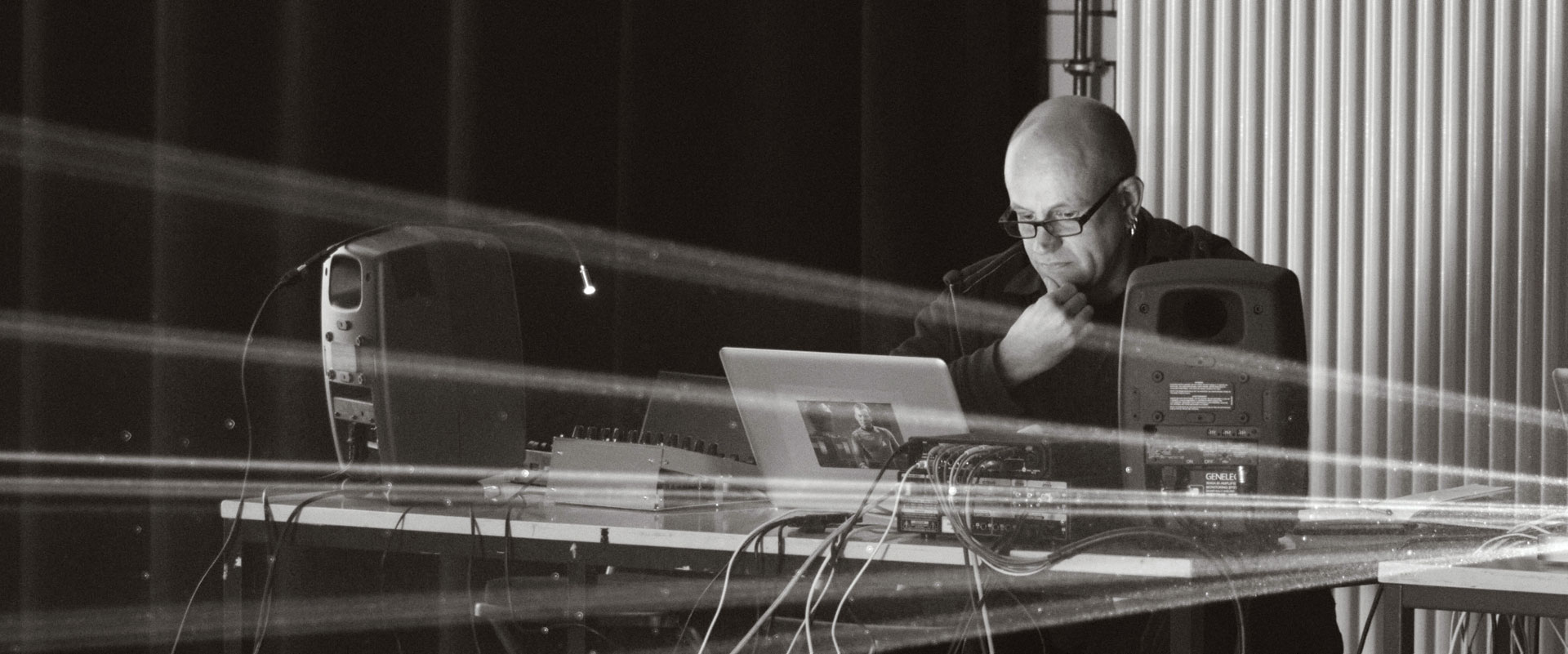
Lumière has been made possible through the generous support by LaserAnimation Sollinger, Berlin [link]